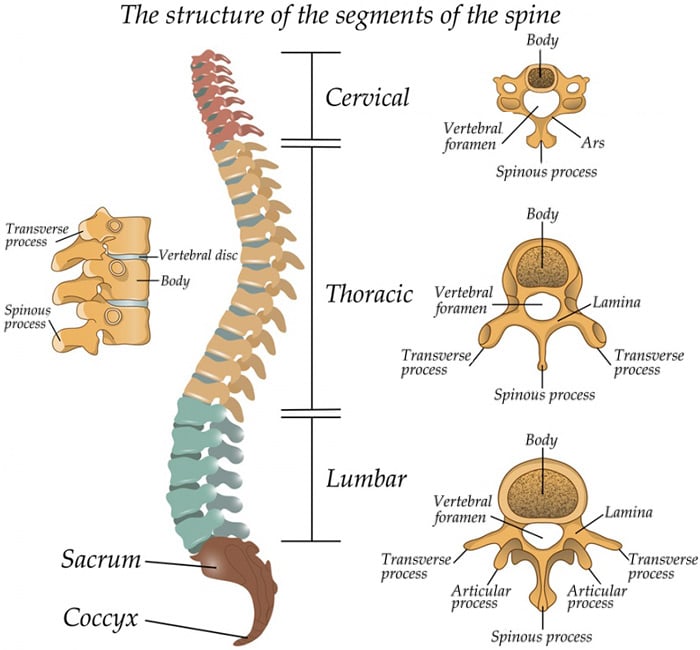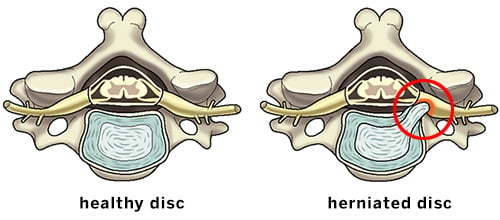Spine (Back and Neck) Injuries and Conditions
There are many types of spine injuries and conditions. Symptoms such as neck pain, back pain, stiffness or posture problems should be assessed by an expert spine physician to determine appropriate treatment. In most cases, to help make a diagnosis, imaging tests (such as X-rays, low-dose radiation EOS images or MRIs) should also be conducted and reviewed by a radiologist with musculoskeletal expertise. Learn more below.
What kind of doctor treats back pain?
Spine anatomy and animations library
Neck conditions and treatments
Back conditions and treatments
What kind of doctor treats back pain?
This depends on your condition or symptoms. If you have no obvious injury that would explain your pain, a good place to start may be to see a physiatrist – a specialist in physical medicine – or a pain management doctor. Either type of doctor can diagnose back pain problems and determine whether physical therapy or other nonsurgical treatments may help you. Depending on their diagnosis of the issue causing your pain, these doctors may also refer you to see a spine surgeon or other type of specialist, such as a rheumatologist.
A spine surgeon (an orthopedic surgeon who specializes in spine conditions) can treat alignment problems and damage to bones or discs of the spine that may be causing back pain. The spine surgeon can also treat complex spine fractures and injuries to the nerves of the spinal cord. Some injuries or conditions may require treatment by an interdisciplinary team of orthopedic or neurologic spine surgeons, pain management doctors, neurologists and/or physical therapists.
In addition to physical damage caused by injuries or spine conditions, degenerative and autoimmune conditions can also create back pain. Rheumatologists treat low back pain and are especially interested in evaluating patients for possible inflammatory disease that can cause it, such as ankylosing spondylitis.
Find a doctor at HSS, who treats back pain or explore the content below to learn more about different conditions and injuries that affect the spine.
Spine anatomy
The spine, or backbone, is the center of support for the upper body. This column of bones and cartilage extends from the base of our skull to the pelvis, enclosing and protecting the spinal cord. Ligaments and tendons and large muscles connect to the spine, while highly sensitive nerves extend outward from the spinal cord. The spinal cord extends from the base of the brain and enters the spinal canal, a protective space within our bony spine, to carry signals to and from the brain throughout the body.
A healthy spine is both highly flexible and very strong. Its strength holds up our head and shoulders and supports our upper body. It allows us to stand up straight. The flexibility of the spine enables us to bend and twist.
Vertebrae
The spine is not one long rigid bone. It consists of 24 small bones called vertebrae that are stacked in a column from the pelvis to the base of our skull. These bones connect to create a canal that protects the spinal cord.
The vertebrae are divided into four regions. From top to bottom, these are:
- The cervical spine (the neck) – the first seven vertebrae located just below the skull
- The thoracic spine – the 12 vertebrae of the upper back
- The lumbar spine – the five vertebrae of the lower back
- The sacral spine – composed of a triangular structure called the sacrum (five individual vertebrae that fuse together between the age of 18 and 30) and the coccyx (commonly called the tailbone and composed of three to five individual vertebrae, some of which may fuse together in adulthood)

Lateral (side) view of the spine in a person facing to the viewer's left.
The curves of the spine
The spine is not perfectly straight; it has natural curves. If you were looking at the spine from the side, you would see that it is curved like an elongated 'S'. These natural curves are very important. When properly maintained, they give the spine full mobility and provide stability for the backbone and surrounding trunk. Good posture is important to maintain the health of our spine.
Spinal cord and nerves
The spinal cord is a cylinder of nerve tissue. Roughly the thickness of a finger, it extends from the skull to the lower back, traveling through the middle part of each stacked vertebra, called the central canal. Nerves branch out from the spinal cord through openings in the vertebrae and carry messages between the brain and the muscles.
Spinal discs
Structures called intervertebral discs are located between each vertebrae. They are flat and round, and about half an inch thick. Their main purpose is to provide shock absorption and allow mobility between the vertebrae. The structure of a spinal disc can be likened to that of a jelly doughnut. It has an outer ring of firm, spongy, malleable material and an inner core composed of a jelly-like substance.
A herniated disc is a common condition that affects these soft tissues. A disc herniation (sometimes called a "slipped disc") occurs when a portion of a disc's inner core bulges or ruptures through the outer ring, putting pressure on a spinal nerve. This may cause low back pain and/or leg pain – such as that associated with sciatica – leg weakness, leg numbness, cauda equina syndrome and other problems.

Illustrations of the axial (overhead) view of a healthy disc and a herniated disc putting pressure on a spinal nerve.
Spinal musculature
The spine is supported and controlled by several layers of muscles that perform different actions, yet work together in a harmonious fashion to support the spine, hold the body upright and allow the trunk to move, twist and bend.
Long and thick muscles span much of the back and function like guide wires, protecting the spine from excessive and sudden movement.
Deep and thinner muscles connect from the rib cage to the pelvis and hips. Together, these muscle groups act as a natural corset to provide stability and a foundation from which the hips and pelvis can derive power. This is known as core musculature.
Spine animations library
Watch videos that illustrate and explain various spinal conditions and injuries, including surgical treatments. (Each surgical animation provides only a general overview of a particular orthopedic procedure. HSS surgeons tailor each operation to the individual patient.)
Spine (Back and Neck) Injuries and Conditions Success Stories
Medically reviewed by Theodore R. Fields, MD, FACP ; Robert S. Griffin, MD, PhD ; Joel M. Press, MD ; Andrew A. Sama, MD
